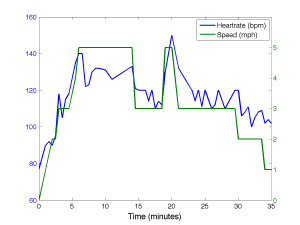Fighting Fantasy lives on
March 27th, 2010 at 2:24 pm (Books, Games)
 Today in Edinburgh I came across a boxed set of the first four Fighting Fantasy books. Immediately a wave of childhood reminiscence swept over me. I was totally fascinated by the Pick-a-Path books (in which you’d make a story plot choice and jump to a different page to learn what the outcome was) and then later by more sophisticated versions that had you track D&D-style stats and possessions and simulate battles (I remember really enjoying some spaceship-themed books). I don’t remember Fighting Fantasy itself, which apparently was the U.K. version of Choose Your Own Adventure (CYOA).
Today in Edinburgh I came across a boxed set of the first four Fighting Fantasy books. Immediately a wave of childhood reminiscence swept over me. I was totally fascinated by the Pick-a-Path books (in which you’d make a story plot choice and jump to a different page to learn what the outcome was) and then later by more sophisticated versions that had you track D&D-style stats and possessions and simulate battles (I remember really enjoying some spaceship-themed books). I don’t remember Fighting Fantasy itself, which apparently was the U.K. version of Choose Your Own Adventure (CYOA).
I hesitated, the books in my hand. I’d had a recent disappointment with CYOA in which I’d jumped on purchasing a couple of recently published books that I’d come across online. “Your Very Own Robot” and “The Haunted House” (both published in 2006, originally 1982) turned out to be painfully inane and even worse, random! There was no connection between a “good” choice and a “good” outcome. No matter what choice you made, it was like rolling a dice to see whether it would lead to success or failure (or unicorns on rainbows, in one case). I was left unsure whether the books ever had any redeeming qualities. (I later learned that these books are from their “younger readers” series. But still.)
Checking these Fighting Fantasy books, they turned out to be 2003 reprints of the original 1982 stories. I wondered whether I should purchase them (turn to page 67) or save my money for something else (turn to page 125). I went with the first option and brought them back to my B&B room. So far I’m midway through my first play/read of The Warlock of Firetop Mountain, and it’s fun (if simple). I’ve slain five orcs and two goblins, and although I am not very Lucky, my Stamina is high and I still have 9 meals of food remaining. Even better, there’s far more logic evident connecting choices to outcomes. I’ve also enjoyed crafting a map of the mountain (one of the things I love about interactive fiction, too). I’m hoping to be faced with some actual puzzles to solve.
I find it interesting that there seems to be a thriving community still surrounding these books. While revolutionary when they were first introduced, I would have expected them to be superseded by more advanced video games, interactive fiction (which provides a richer kind of interaction), and the web itself (hypertext being a much easier way to provide the jumping-around narrative). But judging from the Official Fighting Fantasy Website (where you can sign up to join the online community), they seem instead to have maintained their popularity, and they’re even providing the books in iPhone App format (which seems a less clunky (and more aesthetic) solution than the books).
Perhaps one reason they’re still so popular is that they’ve made it easy for fans to write their own Fighting Fantasies (Amateur Adventures) which are posted for other fans to enjoy. This reminds me distinctly of the Interactive Fiction Archive, where IF written by enthusiasts is shared with others in the community. And in addition, the Fighting Fantasies are actively marketed as a teaching aid for reluctant readers. I think they’re great, even for non-reluctant readers!







